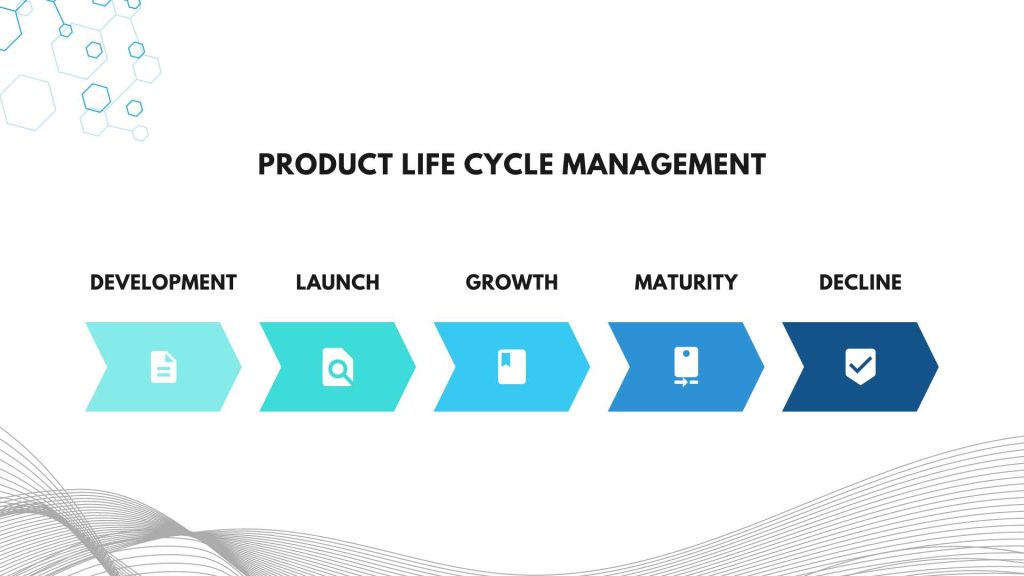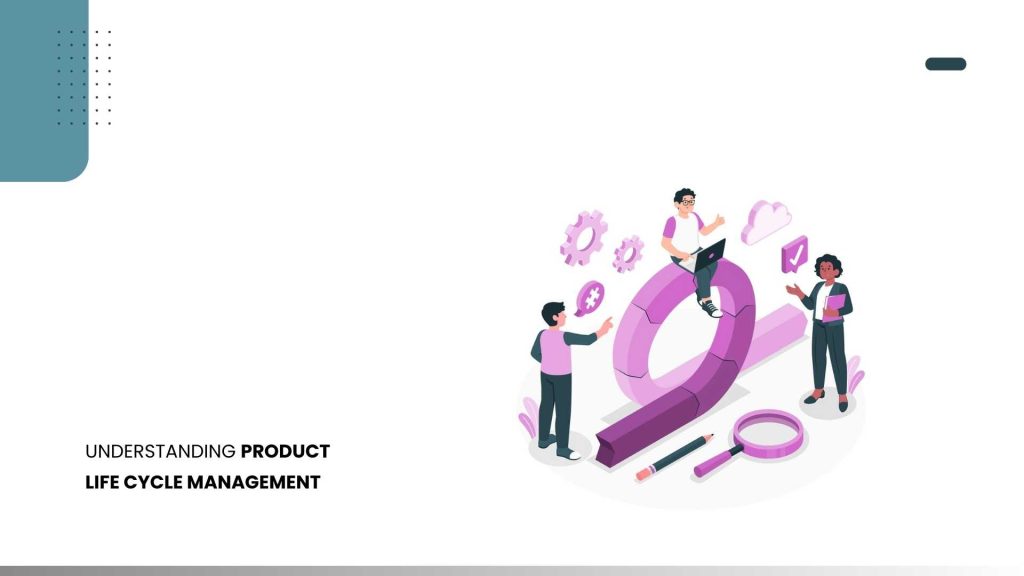In a fast-paced market, businesses need innovation, efficiency, and agility. Product Lifecycle Management (PLM) is vital for streamlining operations, improving collaboration, and fostering sustainable product development and management growth.
What is Product Lifecycle Management
Product Lifecycle Management (PLM) is a strategic approach encompassing a product’s entire lifespan, from its inception through development, manufacturing, distribution, and eventually disposal.
At its core, PLM aims to centralize product data, facilitate collaboration across departments. And synchronize processes to ensure the seamless flow of information and resources throughout the product journey.

Benefits of Product Lifecycle Management
Implementing PLM offers a myriad of benefits to organizations, including:
Improved Efficiency: By centralizing data and automating processes, PLM reduces time-to-market, minimizes errors, and optimizes resource allocation, enhancing overall operational efficiency.
Enhanced Collaboration: PLM fosters cross-functional collaboration by providing a suitable platform for teams to communicate, share insights, and work cohesively towards common goals.
Better Decision Making: With real-time data and analytics access, stakeholders can make informed decisions throughout the product lifecycle, leading to more effective strategies and outcomes.
Cost Reduction: PLM helps reduce costs associated with product development, manufacturing, and maintenance by optimizing processes and minimizing rework.
Increased Innovation: PLM encourages innovation by facilitating the exploration of new ideas, rapid prototyping. And iterative improvement cycles, enabling organizations to stay ahead of the competition.
Overview of the Product Development Process
The product development process typically follows a structured approach consisting of several key stages:
Idea Generation: The initial stage involves brainstorming and conceptualizing new product ideas based on market research, customer feedback, and emerging trends.
Concept Development: Once a promising idea is identified, it undergoes further refinement to develop a detailed concept that outlines the product’s features, functionality, and target market.
Design and Engineering: This stage involves translating the concept into tangible designs, engineering specifications. And prototypes, utilizing various tools and technologies to ensure feasibility and quality.
Manufacturing and Production: Once the design is completed, manufacturing operations are initiated to produce the product at scale. Adhering to quality standards and regulatory requirements.
Distribution and Logistics: After manufacturing, the product is distributed to various channels and markets. Requiring efficient logistics and supply chain control to ensure timely delivery and customer satisfaction.
Marketing and Sales: The product is launched through targeted marketing campaigns and sales initiatives to attract customers and drive revenue.
Key Elements of Product Lifecycle Management
PLM encompasses a range of elements essential for effective product lifecycle management:
Product Data Management (PDM): Centralized storage and management of product-related data, including design documents, specifications, and revisions.
Workflow Automation: Streamlining processes and workflows to reduce manual effort, minimize errors, and improve productivity.
Collaboration Tools: Providing tools and platforms for seamless collaboration among cross-functional teams, including designers, engineers, suppliers, and stakeholders.
Version Control involves tracking and managing different versions of product designs and documents to ensure accuracy and consistency throughout the lifecycle.
Change Management: Managing changes and updates to product specifications, configurations, or requirements while ensuring compliance and minimizing disruptions.
How does Product Lifecycle Management Work
PLM operates through integrated software solutions that enable organizations to manage product-related data, processes, and workflows in a unified environment. These solutions typically offer functionalities such as:
Data Centralization: Consolidating product data from various sources into a single repository accessible to authorized users.
Workflow Management: Defining and automating workflows to streamline processes, enforce approvals, and ensure adherence to predefined standards and protocols.
Collaboration Tools: Facilitating communication and collaboration among team members through features like document sharing, commenting, and task assignment.
Analytics and Reporting: Providing insights into key performance metrics, trends, and anomalies to support data-driven decision-making and continuous improvement.
Challenges of Product Lifecycle Management
While PLM offers numerous benefits, organizations may encounter certain challenges during implementation and adoption, including:
Complexity: Managing the entire product lifecycle involves dealing with vast amounts of data, complex processes, and diverse stakeholders, which can lead to complexity and confusion if not handled effectively.
Integration Issues: Integrating PLM systems with existing enterprise systems, such as ERP and CRM, can be challenging and require significant customization and configuration.
Change Resistance: Resistance to change among employees and stakeholders can hinder PLM adoption and implementation efforts. Requiring effective change management strategies and communication.
Legacy Systems: Organizations with legacy systems or outdated processes may need help modernizing their PLM infrastructure and aligning it with current business needs.
How can MRP Benefit Product Lifecycle Management?
Material Requirements Planning (MRP) is a critical component of PLM that optimizes inventory management and production scheduling based on demand forecasts and supply constraints. MRP helps enhance PLM by:
Demand Forecasting: By examining historical data and market trends, MRP provides accurate demand forecasts, enabling organizations to plan production schedules and resource allocation more effectively within the PLM framework.
Inventory Optimization: MRP helps minimize inventory carrying costs and stockouts by ensuring optimal inventory levels based on demand forecasts, production lead times, and supply chain dynamics.
Production Scheduling: MRP generates production schedules and procurement plans aligned with demand forecasts, resource availability. And production capacities, facilitating smoother operations and timely product delivery.
Resource Utilization: By synchronizing production activities with demand fluctuations, MRP optimizes resource utilization, reduces waste. And enhances overall efficiency within the PLM ecosystem.
Conclusion
The Acumatica ERP & MRP system emerges as a vital tool in streamlining business operations by efficiently organizing various units through its Material Requirements Planning (MRP) screens.
By offering comprehensive insights into activities, orders, requirements, and inventory, Acumatica enables businesses to optimize resource allocation and enhance productivity. Its intuitive interface and robust functionalities make it an invaluable asset for companies aiming to achieve greater efficiency. And competitiveness in today’s dynamic market landscape.

Vijay comes with a vast experience in ERP and enterprise solutions space with about 20 years of experience in various packaged application like Acumatica, SAP, Orion, Salesforce.com, SugarCRM and, SalesLogix.

